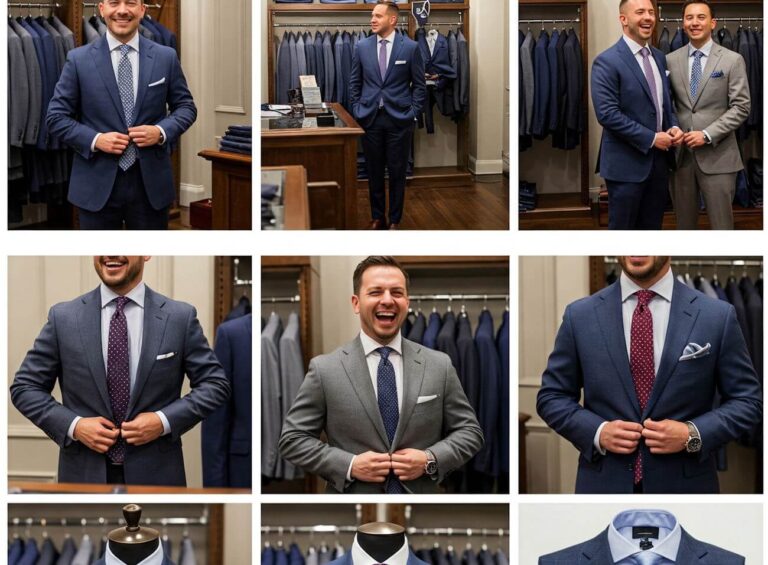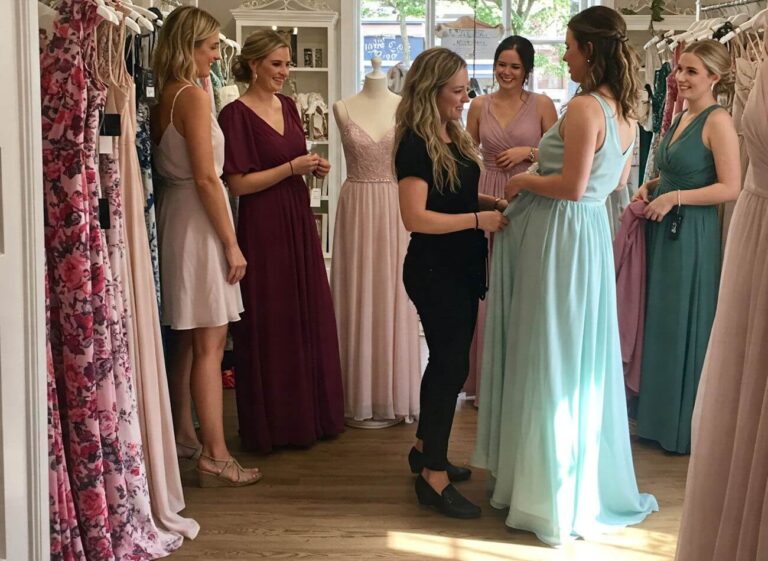Why Renting Clothing Is the Future of Sustainable Fashion
Introduction to Sustainable Fashion
Sustainable fashion is a concept that emphasizes the importance of environmental stewardship and ethical practices within the clothing industry. With growing awareness of climate change, resource depletion, and the detrimental impacts of consumerism, the fashion sector is undergoing a significant transformation. Sustainable fashion seeks to address these pressing environmental challenges by promoting responsible consumption and production methods that prioritize ecological integrity and social equity.
The term “sustainability” in fashion refers to a holistic approach in developing and consuming fashion goods, ensuring that garment production does not harm the environment or exploit labor. This includes considerations such as material selection, manufacturing processes, and the lifecycle of clothing—from production and usage to disposal. Fast fashion, characterized by its rapid production cycles and low-cost, trend-driven items, has emerged as a primary contributor to negative environmental impacts. This model promotes overconsumption and waste, leading to increased pollution and depletion of natural resources.
In response to these challenges, the industry is exploring innovative alternatives that foster sustainability. Renting clothing has garnered attention as a viable solution to minimize waste and reduce the demand for new garment production. By enabling consumers to borrow high-quality pieces rather than purchase them outright, clothing rental services help mitigate the environmental footprint associated with textile waste and overproduction. This shift encourages a more circular economy, where garments are reused and circulated, extending their lifecycle while promoting eco-friendly practices.
As consumers become more aware of their purchasing habits and their impact on the planet, the rise of sustainable fashion signals a transformative change in the industry. Embracing practices such as clothing rentals is a significant step towards making fashion more sustainable and responsible, ultimately benefiting both the environment and society as a whole.
The Environmental Impact of Fast Fashion
The fast fashion industry, characterized by its rapid production cycles and low-cost garments, has become a significant contributor to environmental degradation. This sector thrives on the principles of high consumption and disposability, leading to catastrophic consequences for our planet. One of the most alarming issues is waste generation; it is estimated that 92 million tons of textile waste are produced annually, much of which ends up in landfills. With clothing being consumed and discarded at unprecedented rates, our natural resources are stretched perilously thin.
Resource depletion is another critical concern. The production of garments demands extensive amounts of water and energy. For instance, producing a single cotton t-shirt can require up to 2,700 liters of water—enough for one person to drink for two and a half years. Additionally, the fast fashion industry is reliant on synthetic fibers such as polyester, which are created from petroleum, a non-renewable resource that contributes to a host of environmental issues, including habitat destruction and pollution.
Carbon emissions from the fast fashion sector further exacerbate climate change. The entire lifecycle of a garment—ranging from raw material extraction to manufacturing, shipping, and disposal—contributes significantly to greenhouse gases. It is reported that the fashion industry accounts for around 10% of global carbon emissions, surpassing emissions from international flights and maritime shipping combined. These statistics highlight an urgent call to action for consumers and industry stakeholders alike to reconsider their relationship with fashion.
With such substantial evidence at hand, it becomes evident that the need for sustainable alternatives in fashion is increasingly critical. Shifting towards more eco-conscious practices, such as renting clothing, can mitigate these damaging effects and promote a more sustainable approach to fashion consumption.
What is Clothing Rental? A New Trend Emerging in Fashion
Clothing rental is becoming an increasingly popular avenue within the realm of sustainable fashion, allowing consumers to enjoy a vast array of garments without the commitment and environmental impact of traditional purchasing. This innovative approach to fashion involves leasing clothing items for a specified period, after which they are returned to the rental service. The rental model promotes a circular economy, reducing waste and encouraging a more sustainable lifestyle among consumers.
Within the clothing rental sector, a diverse selection of apparel is available, catering to various occasions and personal styles. This includes everything from high-end designer pieces, which provide access to brands that may otherwise be financially prohibitive, to everyday wear suitable for casual outings. Special occasion outfits, such as wedding gowns and formal attire, can also be rented for short-term use, significantly reducing the need for individuals to purchase items they may wear only once. This versatility makes clothing rental an appealing option for consumers seeking to enhance their wardrobes without compromising their budget or environmental values.
The emergence of rental platforms has played a pivotal role in this trend, providing convenient access to a wide range of rental options. These platforms often feature curated collections, making it easier for users to browse and select clothing that fits their needs. Moreover, the growth of peer-to-peer rental services has fostered a community-oriented approach, allowing individuals to share their own garments while reaping financial benefits. As awareness of sustainable fashion continues to rise, clothing rental services are increasingly recognized as a practical and eco-friendly alternative to traditional shopping methods.
The Benefits of Renting Clothing
Renting clothing has emerged as an innovative solution addressing both consumer needs and environmental challenges in the fashion industry. One of the primary benefits of renting is its cost-effectiveness. With the rising prices of new garments, especially high-quality and designer pieces, renting offers an economical alternative. Consumers can enjoy wearing exclusive attire for a fraction of the retail price, allowing them to participate in fashion-forward trends without a prohibitive investment. This flexibility is particularly beneficial for special occasions, where wearing a beautiful outfit just once can seem wasteful.
Moreover, renting clothing provides unparalleled access to high-quality and designer garments. Many platforms now cater specifically to this market, offering selections from top brands that may otherwise be out of reach for an average consumer. By renting, individuals can experiment with their personal style and enjoy the latest fashion trends without the commitment of purchasing. Testimonials from users often highlight how renting has allowed them to wear designer labels for significant events, elevating their experience while maintaining a responsible approach to fashion.
Another notable advantage is the reduction of closet clutter. Renting encourages consumers to adopt a more mindful approach to their wardrobe. Instead of filling closets with items that may only be worn once or twice, renting allows for a rotating collection that aligns with current needs and aesthetics. This practice not only streamlines personal space but also contributes to a significant reduction in textile waste. As people engage in sustainable fashion practices, they play an active role in minimizing the negative impact of the fashion industry on the environment, with statistics indicating that renting can substantially lower carbon and waste footprints.
Overall, the benefits of renting clothing extend beyond personal satisfaction; they contribute to a broader shift towards sustainable fashion practices that prioritize environmental and economic responsibility.
Economic Implications of Clothing Rentals
The emergence of clothing rental platforms marks a significant shift in the fashion industry’s economic landscape. With the rise of sustainability awareness, the clothing rental market offers an alternative to traditional retail models. This sector not only promotes eco-friendly practices by reducing waste through shared resources, but it also plays a crucial role in shaping consumer spending behaviors. By leveraging the rental model, individuals can access high-quality and trendy garments at a fraction of the purchase price, allowing for greater fashion versatility without the financial burden of ownership.
From an economic standpoint, the clothing rental market cultivates potential job creation across various sectors, including logistics, customer service, and garment maintenance. As these businesses necessitate staff to handle inventory management, order fulfillment, and customer inquiries, they provide numerous employment opportunities. Moreover, local economies can benefit as these rental businesses stimulate surrounding markets, encouraging partnerships with dry cleaners, couriers, and other community services that complement the rental ecosystem.
The implications for traditional retail are notable as well. As consumer preferences shift towards sustainable and flexible fashion choices, brick-and-mortar stores may face increased pressure to adapt. This challenge can lead to innovative strategies within the retail sector, such as incorporating rental services or focusing on quality over quantity. As consumers become more discerning, retailers need to rethink their business models to remain competitive while still aligning with contemporary values.
Ultimately, the economics of clothing rentals offer a pragmatic approach for both consumers and businesses. By enabling everyone to participate in sustainable fashion, the rental market fosters creativity and individuality while mitigating the financial strain often associated with purchasing new clothing. This dynamic balance between economic benefits and sustainability signals a promising future for both the fashion industry and environmentally conscious consumers.
Challenges Facing the Clothing Rental Industry
The clothing rental industry has emerged as a promising solution to promote sustainable fashion, yet it is not without its challenges. One of the most pressing issues is logistics. Efficiently managing the supply chain to ensure that garments are available, maintained, and delivered timely poses significant hurdles. Rental companies often struggle with the transportation of clothing, especially when catering to a wide geographical area. This logistical complexity can lead to increased costs and longer lead times for customers, potentially discouraging them from choosing rental options over traditional purchasing.
Another challenge relates to garment care and maintenance. The longevity and appeal of rental clothing depend heavily on how well these items are cared for during their lifecycle. High turnover rates and the need for frequent cleaning can lead to accelerated wear and tear, ultimately affecting the quality of the garments. Companies must invest in more sustainable cleaning practices while also ensuring that the garments remain in excellent condition for subsequent renters. Innovative solutions, such as eco-friendly cleaning technologies, can play a crucial role in addressing this concern.
Consumer hesitancy is also a significant barrier to the clothing rental market’s growth. Many individuals remain skeptical about the concept of renting clothing due to concerns surrounding hygiene, fit, and quality. This mistrust may stem from negative past experiences or misconceptions about rental services. To combat this, companies must focus on building strong customer relationships through transparent practices, user-friendly platforms, and effective communication regarding garment quality and care.
Market saturation is yet another obstacle that the clothing rental industry faces, as numerous businesses vie for consumer attention. As the competition continues to grow, differentiation through unique offerings, superior customer service, and innovative marketing strategies becomes essential. By tackling these challenges head-on, the clothing rental industry can pave the way for a more sustainable future within the fashion landscape.
Success Stories: Brands Leading the Way in Clothing Rentals
As the demand for sustainable fashion continues to rise, several clothing rental brands are emerging as front-runners in this evolving landscape. Companies such as Rent the Runway, Le Tote, and HURR Collective exemplify how innovative business models can align profitability with environmental consciousness. Rent the Runway, for instance, offers a vast array of rental options from high-end designer pieces to everyday essentials, allowing consumers to access high-quality clothing without the financial burden of purchase. Their unique subscription model not only reduces waste but also promotes a circular fashion economy.
Le Tote operates under a similar philosophy, providing a subscription service that allows users to rent clothing and accessories. By curating personalized selections based on individual preferences, they enhance customer satisfaction while minimizing the impulse purchases that typically contribute to fast fashion. Their approach emphasizes versatility and sustainability, appealing to eco-conscious customers who seek stylish solutions without compromising their values.
Across the ocean, HURR Collective is championing clothing rentals in the UK, focusing on peer-to-peer rentals that empower individuals to monetize their wardrobes. This platform promotes sustainability by extending the life cycle of garments, reducing the carbon footprint associated with manufacturing new clothing. By fostering a community of users who rent, lend, and borrow, HURR Collective not only encourages responsible consumption but also builds a sense of trust and camaraderie among fashion enthusiasts.
These brands demonstrate that the clothing rental model can be both sustainable and financially viable. By promoting access over ownership, they are reshaping consumer habits and proving that the future of fashion lies in collaboration, sharing, and a commitment to reducing environmental impact. As more brands adopt similar principles, the clothing rental market is poised to become a cornerstone of sustainable fashion.
Consumer Mindset: The Shift Towards Renting
The landscape of fashion consumption is witnessing a transformative shift as consumers increasingly adopt a mindset that prioritizes sustainability. This change is largely driven by a growing awareness of the environmental and ethical implications of the fast fashion industry, which has faced criticism for its resource-intensive practices and exploitation of labor. As consumers become more informed about these issues, they are gravitating towards solutions that provide more sustainable alternatives, such as renting clothing.
Ethical buying habits are emerging as a response to the rampant consumption and disposability that has historically characterized fashion trends. More consumers are seeking to align their purchases with their values, leading to a heightened demand for rental services that allow access to high-quality apparel without the commitment of ownership. Renting not only promotes a circular economy by extending the life cycle of garments, but it also encourages individuals to think critically about their consumption patterns, fostering a more mindful approach to style choices.
Cultural and social dynamics also play a significant role in this shift. As sharing economy models gain traction across various sectors, the notion of ownership is evolving. Platforms that facilitate clothing rentals are leveraging social media and influencer marketing, appealing to a younger demographic that values experiences over possessions. Many consumers are now viewing clothing as a means of expression rather than an investment, making rent-based fashion solutions increasingly attractive. This new paradigm reflects a broader societal trend that prioritizes sustainability and ethical considerations in purchasing behavior, underscoring the potential for renting clothing to become a mainstream practice in the fashion industry.
The Future of Clothing Rental and Sustainable Fashion
The evolution of sustainable fashion has ushered in a new era where clothing rental is gaining traction as a viable alternative to fast fashion. As awareness of environmental issues and ethical consumption rises, it’s increasingly apparent that renting clothing offers significant benefits, not just for consumers but for the planet as well. The future of clothing rental looks promising, primarily fueled by technological advancements and growing collaborations within the fashion industry.
Technology plays a pivotal role in shaping the clothing rental landscape. Innovations such as augmented reality (AR) and artificial intelligence (AI) enhance the consumer experience by allowing individuals to ‘try before they buy’ virtually. Furthermore, data analytics are being utilized to predict trends and personalize recommendations, making it easier for consumers to select items that suit their preferences and needs while minimizing unnecessary purchases. This technological integration not only streamlines the rental process but also promotes more sustainable consumption practices by encouraging consumers to select items that they truly require.
Collaborative efforts among brands may also dictate the future of clothing rental in sustainable fashion. Partnerships between rental companies and established fashion brands can lead to a wider array of high-quality items available for rent, expanding the overall selection to meet diverse consumer demands. Additionally, such collaborations can amplify awareness of sustainable practices, as brands join forces to promote eco-friendly initiatives actively. Through these partnerships, companies can emphasize the importance of renting over buying, further solidifying the notion that clothing rental is a viable avenue for those seeking to reduce their ecological footprint.
As consumer habits continue to evolve, it is anticipated that a significant shift towards clothing rental will reshape industry practices. With the younger generation increasingly prioritizing sustainability and ethical considerations in their purchasing decisions, the rental model will likely attract a broader audience. Therefore, it is essential for the fashion industry to embrace this shift and adapt to a future where renting clothing becomes an integral part of sustainable fashion.







